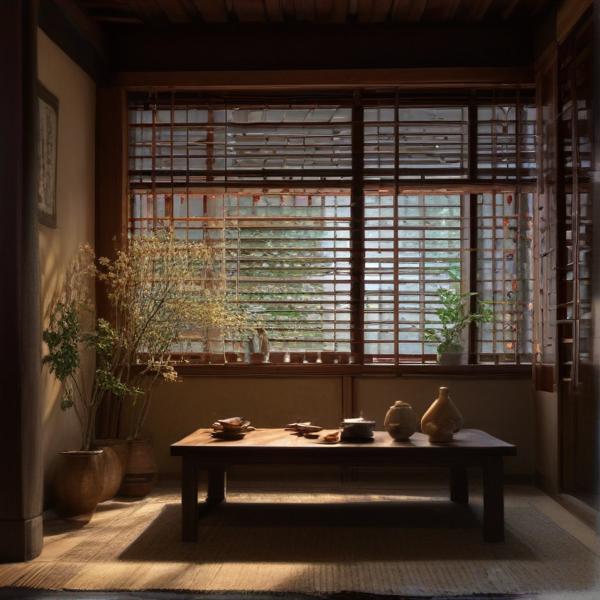基本信息 (Basic Information)
含义与用法 (Meanings & Usage)
中文核心释义 (Core Chinese Meaning): 洗头发,用水洗涤;受润泽。
英文核心释义 (Core English Meaning): to wash (typically hair), to bathe; to be moistened or nourished.
象形意义 / 为何这么写 (Pictographic Meaning / Writing Rationale)
文言文释义 (Classical Chinese Meaning)
文言文中“沐”多指洗头发、洗澡,也可引申为蒙受恩惠,与现代意义相近。In Classical Chinese, '沐' most often refers to washing one's hair or bathing, and by extension, receiving favor or grace. Similar to modern meaning.
深入学习 (In-depth Study)
字源故事 (Origin Story)
字形演变 (Character Evolution)
常用词语和例句 (Common Words & Examples)
沐浴 (to bathe; to immerse (physically or metaphorically))
她每天晚上都会沐浴。
Eng: She takes a bath every evening.
沐恩 (to be blessed with grace; to receive favor)
我们沐恩于祖先的智慧。
Eng: We are blessed by the wisdom of our ancestors.
沐浴阳光 (to be bathed in sunlight)
孩子们在花园里沐浴阳光。
Eng: The children are bathing in the sunshine in the garden.
相关成语 (Related Idioms)
相关成语信息待补充。Related idiom information pending.
多语言翻译 (核心释义) (Translations (Core Meaning))
- French: laver (particulièrement les cheveux), baigner
- German: das Haar waschen, baden, begünstigt werden
- Spanish: lavar (especialmente el pelo), bañar
- Italian: lavare (soprattutto i capelli), fare il bagno
- Portuguese: lavar (especialmente o cabelo), banhar-se
- Russian: мыть (обычно волосы), купаться, принимать благодать
- Arabic: يغسل (خاصة الشعر)، يستحم، يتلقى نعمة
- Persian: شستن (به ویژه مو)، حمام کردن
- Dutch: wassen (vooral het haar), baden
- Polish: myć (zwłaszcza włosy), kąpać się
- Vietnamese: gội (đặc biệt là tóc), tắm
- Ukrainian: мити (зазвичай волосся), купатися
视频学习资源 (Video Learning Resources)
通过以下链接在热门视频网站搜索 "沐" 的更多讲解:
Search for more explanations of "沐" on popular video sites:
- 在 Bilibili.com 搜索 "沐 字源 说文解字" (Search on Bilibili)
- 在 YouTube.com 搜索 "沐 character origin etymology" (Search on YouTube)
网络参考 (Web References for "沐") ()
网络内容摘要 (Web Content Summary):
```html核心含义与象形起源:“沐”字本义为“洗头”或“洗涤”,常与用水清洗相关。它最早见于战国时期,最初的字形左边三横表示水,右边像树木,结合象征“用水清洗树木”之意。 Core meaning & pictographic origin: The original meaning of "沐" is "to wash" (especially the hair) or "to cleanse," often relating to the use of water. It first appeared during the Warring States period; the three horizontal strokes on the left represent water, while the right side resembles a tree, symbolizing "washing trees with water."
-
常用词语:
- 沐浴:洗澡或洗头。(To take a bath or wash hair)
- 沐恩/沐泽:比喻蒙受他人恩惠,多用于敬辞。(To be favored or blessed, often used in formal or respectful contexts)
- 沐日:古时指休假的日子。(Day off or holiday in ancient times)
- 沐粱:米汁,古人用来洗头。(Rice gruel used as shampoo in ancient times)
-
成语与特殊用法:
- 沐仁浴义:形容受到仁义的熏陶。(Bathe in benevolence and righteousness; being influenced by virtues)
- 沐露沾霜:形容经受风吹雨打、辛苦劳作。(Endure hardships, braving wind and dew)
- 易混淆点:“沐”有时也作名词用,指洗澡的假期或米汁,需与“浴”区分。 Easily confused points: "沐" can be used as a noun (holiday for washing or rice rinse), and should be distinguished from "浴" (bath, mostly body washing).
文化背景:古代用“沐”表达接受恩惠或教化,是敬辞;同时,在官方场合表示休息日。现代多用于“沐浴”等生活用语。 Cultural note: In ancient China, "沐" was used in honorific expressions of receiving favor or education, and also referred to days off in official contexts. Today, it is mainly seen in daily life words like "take a bath" (沐浴).
```沐_百度百科
"沐"始见于战国时期的文字(图1)。战国时期的文字构型相对比较简单。左边是三横,右边像是一个树木。到了《 说文 》的小篆文字时(图2),构型开始变的复杂。 左边的三横变成了"水"的小篆文字书写体,右边原先的树木树枝,相互连接起来,像是一个"山"字上下对称被中间一竖贯穿而 ...
沐的解释|沐的意思|汉典"沐"字的基本解释 - 漢典
如:沐恩(清代官场中下级对上级的自称,意为沐浴着上级恩惠之人);沐泽(蒙受恩泽);沐浴;沐仁浴义(受仁义的熏陶);沐露沾霜(饱经霜露辛苦) 词性变化. 沐 mù 〈名〉 (1) 指休假 [take a holiday] 。如:沐日(休假日) (2) 米汁。古人常用作洗头之用 [thin rice gruel] 。如:沐粱(用 ...
更多图片 (沐 More Images) ()
